#ERP implementation
Explore tagged Tumblr posts
Text
2 notes
·
View notes
Text
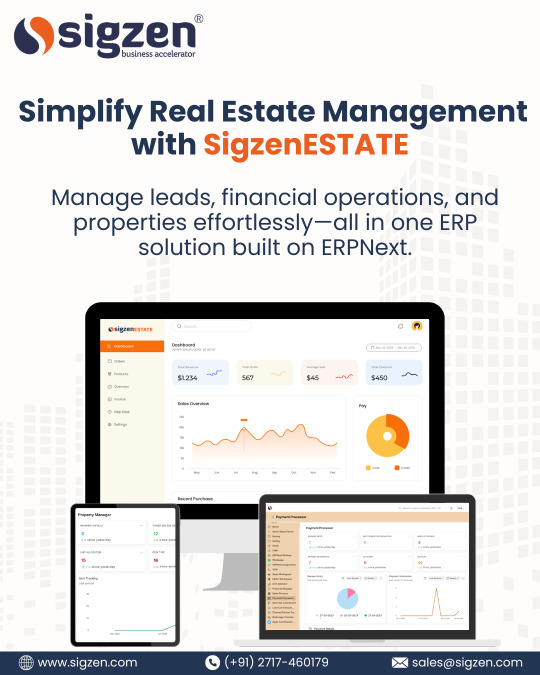
🏢✨ Simplify your real estate operations with SigzenESTATE – your all-in-one ERP solution powered by ERPNext! From managing leads to streamlining finances and property details, we've got it all covered. Effortless, efficient, and built for success. 💼💡
📊 Everything you need, all in one smart dashboard. 📞 Ready to transform the way you work? Let's connect!
#RealEstateManagement #ERPNext #SigzenESTATE #PropertySolutions #BusinessSimplified #TechForRealEstate #DigitalTransformation #SmartBusinessTools #RealEstateERP #SigzenSolutions
#erpnext#business growth#erp implementation#businesssolutions#business software#erp software solutions#real estate prosperity#real estate management#real estate#property solutions
2 notes
·
View notes
Text
Why Engineering Companies Need Standard ERP Solutions for Successful Implementation
In today’s fast-paced manufacturing industry, the need to streamline operations, improve efficiency, and ensure growth is paramount. Businesses, especially in the engineering and manufacturing sectors, are turning to ERP software to manage their operations effectively. Enterprise Resource Planning (ERP) software is a game-changer for manufacturers looking to grow faster by integrating their processes and providing a comprehensive solution for resource management, decision-making, and scalability. If you are a manufacturer in India or a growing business in Bhopal, partnering with the right ERP software company in Bhopal could be the key to unlocking your potential. This blog explores the benefits of ERP software for manufacturers, the role of local ERP software providers in Bhopal, and why adopting ERP solutions is essential for success in today’s competitive landscape.
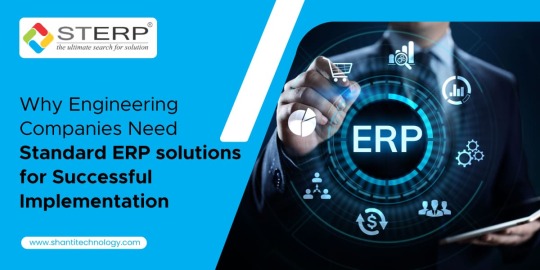
What Is ERP Software and Why Does It Matter?
ERP software is an integrated system that unifies core business processes such as procurement, inventory management, production planning, finance, and customer relationship management (CRM) into a centralized platform. This ensures seamless communication between departments, minimizes errors, and optimizes resource usage. For manufacturers, manufacturing enterprise resource planning solutions offer specific functionalities to address production scheduling, supply chain management, and quality control. These features are critical for scaling operations and improving overall business performance.
Benefits of ERP Software for Manufacturers
1. Centralized Operations
Manufacturers handle a wide range of tasks daily, from raw material procurement to final product delivery. ERP software integrates all these processes into a single platform, eliminating silos and ensuring real-time communication. Leading ERP software providers in Bhopal specialize in offering solutions tailored to manufacturing needs, ensuring smoother operations.
2. Enhanced Decision-Making
ERP systems provide accurate, real-time data through intuitive dashboards and analytics tools. This enables business leaders to make informed decisions, whether it is about production schedules, resource allocation, or financial forecasting. Engineering firms, in particular, can benefit from ERP software for engineering companies in India, which offers insights specific to their project-oriented workflows.
3. Optimized Resource Utilization
Effective resource management is critical in manufacturing. ERP software helps monitor and allocate raw materials, workforce, and equipment efficiently, reducing waste and ensuring optimal use of resources. By partnering with an engineering ERP software company in Bhopal, businesses can access customized solutions that cater to their unique requirements.
4. Improved Productivity
Automation of routine tasks, such as inventory tracking and order processing, frees up employees to focus on more strategic activities. This boost in productivity is a significant reason why manufacturers using ERP software for engineering companies experience faster growth.
5. Scalability
As manufacturing businesses grow, their operational needs become more complex. ERP systems are designed to scale with the organization, supporting additional locations, products, and services. Local ERP software companies in Bhopal provide scalable solutions that align with the growth trajectories of businesses in the region.
Why Bhopal Manufacturers Should Choose Local ERP Providers
Bhopal’s manufacturing and engineering sectors are thriving, thanks to its strategic location and growing industrial base. Local businesses stand to gain significantly by adopting ERP systems offered by experienced ERP software providers in Bhopal.
1. Tailored Solutions
Local providers understand the specific challenges faced by manufacturers in Bhopal and can customize solutions to meet their needs. For example, ERP software companies in Bhopal may offer modules tailored to local supply chains or compliance requirements.
2. On-the-Ground Support
Partnering with a local ERP software company in Bhopal ensures faster response times and personalized support during implementation and maintenance. This reduces downtime and ensures a smoother transition.
3. Cost-Effectiveness
Local ERP providers offer cost-effective solutions by eliminating the need for long-distance travel or remote troubleshooting. Businesses in Bhopal can enjoy world-class services without breaking the bank.
ERP Software for Engineering Companies in India
Engineering companies often deal with project-based operations requiring precise planning, tracking, and execution. ERP software for engineering companies in India is designed to address these needs, offering features like project management, resource scheduling, and cost tracking.
In Bhopal, collaborating with an engineering ERP software company in Bhopal ensures that local engineering firms have access to specialized solutions. These tools not only enhance operational efficiency but also improve project delivery timelines, leading to greater customer satisfaction.
ERP for Manufacturing Companies in India
India’s manufacturing sector is booming, driven by government initiatives and growing demand. To stay competitive, businesses must invest in advanced tools like ERP for manufacturing companies in India. These systems help manufacturers streamline production, manage supply chains, and maintain quality standards.
For manufacturers in Bhopal, adopting ERP software in Bhopal is a strategic move to keep pace with industry leaders. Features like real-time inventory management, production scheduling, and demand forecasting ensure businesses can respond quickly to market changes.
Real-Life Benefits of ERP Implementation
Manufacturers who implement ERP systems report:
Reduced Costs: By optimizing processes, ERP systems lower operational costs.
Faster Delivery: Improved production planning leads to quicker order fulfillment.
Better Quality: Automated quality checks ensure products meet customer expectations.
Businesses in Bhopal that have partnered with ERP software companies in Bhopal have experienced significant improvements in productivity, customer satisfaction, and revenue growth.
How to Choose the Right ERP Software Company in Bhopal
Selecting the right ERP provider is critical for a successful implementation. Here is what manufacturers should look for in an ERP software company in Bhopal:
Industry Expertise: Choose providers specializing in ERP software for engineering companies or manufacturing sectors.
Customization: Ensure the solution aligns with your unique business processes.
Local Presence: A local provider offers faster support and a better understanding of regional requirements.
Scalability: Opt for a system that can grow with your business.
Conclusion
ERP software is no longer a luxury but a necessity for manufacturers aiming to grow faster and compete effectively. By integrating operations, improving resource management, and enhancing decision-making, ERP systems empower businesses to achieve their goals. For manufacturers in Bhopal, collaborating with a trusted ERP software company in Bhopal ensures tailored solutions, cost-effectiveness, and reliable support.
Whether you are part of the engineering sector or a manufacturing enterprise, investing in manufacturing enterprise resource planning solutions will position your business for success in today’s dynamic market. Do not wait—explore the benefits of ERP software in Bhopal today and take the first step toward sustainable growth.
#ERP for manufacturing company in India#ERP implementation company in India#Best ERP implementation agecny#STERP#ERP software for engineering companies#Manufacturing enterprise resource planning#Rajkot#Surat#Ahmedabad#Gujarat#Maharashtra#Mumbai#Pune#Bhopal#Indore#Madhya Pradesh#ERP software for engineering companies in India#ERP integration#cloud ERP#ERP India#small business#ERP implementation
3 notes
·
View notes
Text
Seguridad
La seguridad informática en una Empresa que se encarga de realizar eventos es esencial para proteger la información sensible relacionada con la planificación, organización y ejecución de eventos.
Para esto indicare a continuación 8 pasos que se deben tener en cuenta:
1 Autenticación solida y control de acceso
2 Encriptación de datos
3 Actualizaciones y parches de seguridad
4 Sistema de detección de actividades sospechosas
5 Audotorias de seguridad regulares
6 Backup y recuperación de datos
7 Capacitación y concientización de los empleados
8 Gestión de proveedores
Esto con el fin de manterner salvagurdada la información de la organización, evitando programas maliciosos o virus que puedan afectar la operación.
IMPLEMENTACIÓN ERP
Para realizar la implementación de una ERP en la organización que se dedica a la realización de eventos a empresas de tecnologia, se debe tener en cuenta varios aspectos:
Se debe hacer una aevaluación de necesidades, donde se evidencie las areas que se quieren cubrir entre esas gestión de clientes, gestión de eventos, recursos humanos y contabilidad.
Investigar las soluciones de las ERP: Para esto se debe hacer una investigación de las ERP que estan en el mercado y seleccionar la que mejor se ajuste a las necesidades de la organización. entre esas esta SAP, Oracle, Eventpro, eventbrite entre otras.
Persoalización: Una vez se halla escogido la ERP que mejor se asocie a las necesidades de la empresa de eventos, esto puede requeriri la personalización de algunos modulos que se adapte al flujo de trabajo.
Implemenatación: Para esta etapa de la implemntación de la ERP se requiere migrar datos desde sistemas anteriores, en donde la capacitación del personal es escencial, para el uso del nuevo sistema, brindando herramientas de trabajo.
Pruebas: se realiza lo que conocemos como una prueba acida, en donde se evalua que el sistea funcione bien en caso de tener fallas se debe realizar las correciones pertinentes antes de hacer un lanzamiento oficial.
Lanzamiento: Una vez se halla determinado que el sistema funciona correctamente se realiza el lanzamiento oficial y de esta misma manera se estara apoyando el personal para abordar cualqueier problema que pueda surgir.
Mantenimiento: Se debe realizar mantenimiento regular al sistema, aplicar actualizaciones y realizar ajusres segun sea necesario.
Conclusiones
En conclusión la implementación de una ERP para una empresa que se encarga de realizar eventos a anivel nacional e internacional, requiere una planificación cuidadosa, un enfoque en la seguridad de la información y una capacitación adecuada del personal. Con la estrategia correcta, una ERP puede ayudar a la empresa a optimizar sus operaciones y a alcanzar sus objetivos comerciales de manera más efectiva.
Referencias
Solís Granda, I. I. (2016). Desarrollo e implementación de controles de seguridad informática para el sistema ERP Academium de la Unidad Educativa Javier, siguiendo la norma ISO 27001 (Master's thesis).
Balseca, A. S. (2014). Diseño del modelo de gestión de seguridad de la información del sistema ERP de EP Petroecuador de acuerdo a norma ISO/IEC 27002 y COBIT
Obtenido de Repositorio Digital ESPE: http://repositorio. espe. edu. ec/bitstream/21000/8152/1/AC-GRT-ESPE-047641. pdf.
Acosta Castaño, R. E. (2011). Buenas prácticas de seguridad para sistemas ERP.
Maldonado Palacios, R. C. (2015). Estudio para la implementación de un sistema ERP, análisis de la seguridad de la red al ejecutarlo.
2 notes
·
View notes
Text
#odooimplementation#odoointegration#odoocustomization#erp implementation#odoo services#odoo#erp software solutions#odoodevelopment#erp solution#development#software#erpandcrmdevelopment
2 notes
·
View notes
Text
Best cloud ERP software in Saudi Arabia
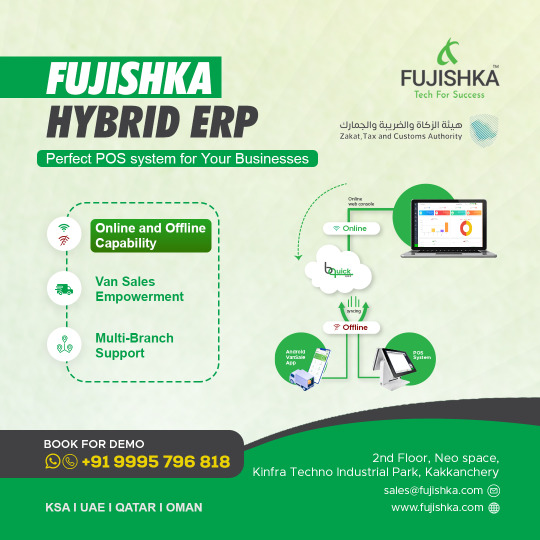
Best Cloud ERP in Saudi Arabia And Middle East
Fujishka Solutions is The best Hybrid ERP solutions
More Info: https://fujishka.com/
#erp systems#erp software uae#erp solution#erp implementation#ERP saudi arabia#saudi arabia#middle east#erp gcc
2 notes
·
View notes
Text
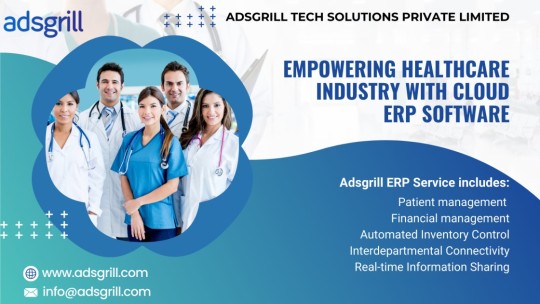
The healthcare industry plays an important role in society by offering people access to crucial medical services. These industries face several challenges that affect the healthcare industry’s capability to deliver cost-effective and efficient care. These problems, which range from regulatory difficulties to technological improvements, can have a significant impact on how healthcare is delivered and patient outcomes.
A good ERP solution unites all of the diverse parts of a complex healthcare organisation under a single roof. Each component is meant to work in tandem with the others, giving carers unrestricted access to all data across the organisation. Data can be shared across patient, pharmacy and clinician systems, as well as back-office administrative, personnel, and financial systems, allowing for better cost tracking and resource management.
#erp software#erp implementation#erp#healthcare#erp for small business#hospital erp software in saudi arabia
2 notes
·
View notes
Text

We develop supermodern real-time websites, e-shops and web applications. From simple microsites to complex system solutions.
We are bainry.
#realtime#website#ecommerce#application#web development#cms development services#crmsolutions#erp implementation#automation
2 notes
·
View notes
Text
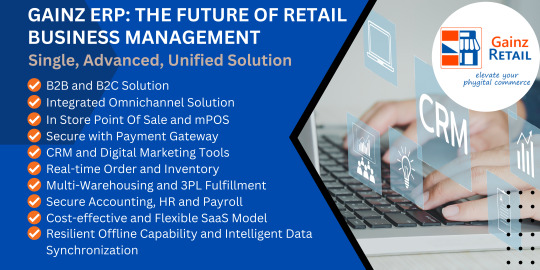
Gainz Retail ERP : The Future of Retail Business Management
We designed Gainz Retail ERP as an easy- to-use, retail business solution for in-store and online shopping.
Gainz Retail eliminates the hassle of maintaining multiple software for: POS - E-commerce - Accounting - Timesheet & Payroll
Let's show you how Gainz Retail ERP can manage your business with a single, advanced, unified solution.
for more details visit - https://www.odata.com/
#cloud erp#erp for small business#erp implementation#erp software#erpdevelopment#erpcompany#erp#erpsolutions#canada#sap erp#saas technology#saas application development#saascompany#saas software#saas app development company#retail pos software#retail store#retail business#retail erp software
2 notes
·
View notes
Text
Building an ERP System: A Comprehensive Step-by-Step Guide
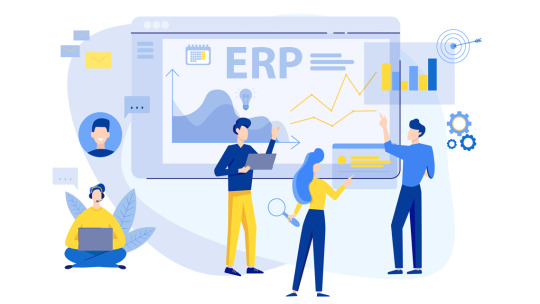
#application#development#software#software development#erpcloud#erp implementation#erp software#erp consultant#sap erp
2 notes
·
View notes
Text
#erp#erp software#erp system#erp implementation#erp solutions#cloud erp#erp integration#erpsolutions#erp for manufacturing#erp development company
0 notes
Text
#erp software#erpnext module#erp implementation#businesssolutions#crm software#erp system#cement#construction
2 notes
·
View notes
Text

💼 Looking for the BEST ERP Software to streamline your billing and operations? ✨ Discover the power of Sigzen Technologies – your ultimate ERP solution trusted by businesses worldwide! ✅ Smart. Reliable. Scalable.
🔗 Visit: www.sigzen.com 📧 [email protected] 📞 (+91) 2717-460179
#ERPSoftware #BusinessSolutions #SigzenTechnologies #BillingMadeEasy #SmartERP #EnterpriseSolutions #BusinessGrowth #TechForBusiness #AutomationTools #DigitalTransformation
#erpnext#business growth#erp implementation#businesssolutions#business software#manufacturing solutions#erp software solutions#enterprisesolutions
2 notes
·
View notes
Text
Understanding Enterprise Resource Planning (ERP): A Comprehensive Overview
In today’s fast-paced business environment, organizations need to streamline operations, enhance efficiency, and make data-driven decisions to stay competitive. This is where Enterprise Resource Planning (ERP) systems come into play. ERP is a powerful tool that integrates various business processes into a unified system, enabling companies to manage resources effectively and achieve operational excellence. This blog post explores the concept of ERP, its benefits, challenges, and its transformative impact on modern businesses.
What is ERP?
Enterprise Resource Planning (ERP) refers to a suite of software applications that integrate core business functions such as finance, human resources, supply chain, manufacturing, and customer relationship management into a single, cohesive system. By centralizing data and automating processes, ERP systems provide a real-time view of business operations, facilitating better decision-making and collaboration across departments.
The origins of ERP can be traced back to the 1960s with the advent of Material Requirements Planning (MRP) systems, which focused on manufacturing and inventory management. Over time, these systems evolved to encompass broader business functions, giving rise to modern ERP solutions. Today, ERP systems are cloud-based, scalable, and equipped with advanced technologies like artificial intelligence, machine learning, and analytics.
Key Benefits of ERP Systems
Implementing an ERP system offers numerous advantages for organizations of all sizes. Here are some of the most significant benefits:
Improved Efficiency: ERP eliminates redundant processes and automates routine tasks, such as payroll processing or inventory tracking. This reduces manual work, minimizes errors, and frees up employees to focus on strategic initiatives.
Centralized Data Management: With ERP, all business data is stored in a single database, ensuring consistency and accessibility. For example, sales teams can access inventory levels in real time, while finance teams can generate accurate financial reports without reconciling disparate systems.
Enhanced Decision-Making: ERP systems provide real-time insights through dashboards and analytics. Managers can monitor key performance indicators (KPIs), identify trends, and make informed decisions quickly.
Scalability and Flexibility: Modern ERP solutions are designed to grow with businesses. Whether a company expands into new markets or adds new product lines, ERP systems can be customized to meet evolving needs.
Regulatory Compliance: ERP systems often include features to ensure compliance with industry standards and regulations, such as tax laws or data protection policies, reducing the risk of penalties.
Challenges of ERP Implementation
While ERP systems offer significant benefits, their implementation can be complex and challenging. Organizations must be prepared to address the following hurdles:
High Initial Costs: ERP implementation requires substantial investment in software, hardware, and consulting services. Small and medium-sized enterprises may find these costs daunting.
Time-Intensive Deployment: Implementing an ERP system can take months or even years, depending on the organization’s size and complexity. During this period, businesses may face disruptions in daily operations.
Change Management: Employees may resist adopting new systems due to unfamiliarity or fear of job displacement. Effective training and communication are critical to overcoming resistance and ensuring a smooth transition.
Customization Risks: While ERP systems are highly customizable, excessive modifications can lead to compatibility issues, increased costs, and longer implementation timelines.
The Future of ERP
The ERP landscape is evolving rapidly, driven by technological advancements and changing business needs. Cloud-based ERP solutions are gaining popularity due to their affordability, scalability, and ease of maintenance. Additionally, the integration of artificial intelligence and machine learning is enabling predictive analytics, allowing businesses to anticipate market trends and optimize operations.
Mobile ERP applications are also on the rise, empowering employees to access critical data on the go. Furthermore, the focus on sustainability is prompting ERP vendors to incorporate features that help organizations track their environmental impact and achieve green goals.
Conclusion
Enterprise Resource Planning systems are a cornerstone of modern business management, offering a unified platform to streamline operations, enhance decision-making, and drive growth. While the implementation process can be challenging, the long-term benefits of ERP—improved efficiency, centralized data, and scalability—make it a worthwhile investment for organizations aiming to thrive in a competitive landscape.
For businesses considering ERP adoption, it’s essential to evaluate their specific needs, choose a solution that aligns with their goals, and invest in proper training and support. As technology continues to advance, ERP systems will undoubtedly play an even more critical role in shaping the future of business operations.
This content is original and free of any proprietary restrictions, created to inform and educate readers about the value and intricacies of ERP systems.
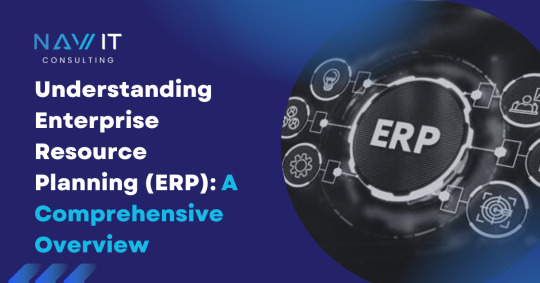
#ERP systems#Enterprise Resource Planning (ERP) systems#What is ERP#supply chain#artificial intelligence#machine learning#ERP solutions#ERP implementation
0 notes
Text
The Future of ERP: Trends Shaping the Best ERP Software in India

Enterprise Resource Planning (ERP) systems are rapidly evolving, transforming the way businesses operate. With technological advancements and increasing business demands, ERP solutions are becoming more efficient, intelligent, and scalable. The best ERP software in India is now designed to offer enhanced automation, seamless integration, and real-time decision-making capabilities.
1. Cloud-Based ERP is Leading the Way
Cloud technology has revolutionized ERP systems, making them more accessible and cost-effective. Many businesses are transitioning from traditional on-premises ERP to cloud-based solutions for better flexibility. The best ERP software in India now offers cloud capabilities that ensure remote access, real-time updates, and reduced IT infrastructure costs.
2. AI and Machine Learning for Smarter Operations
Artificial Intelligence (AI) and Machine Learning (ML) are transforming ERP systems by automating repetitive tasks and improving decision-making. Businesses using the best ERP software in India can leverage AI-driven insights to optimize inventory, streamline production, and enhance customer service.
3. Blockchain for Secure Transactions
Blockchain technology is improving security and transparency in ERP systems. Companies using the best ERP software in India benefit from blockchain-enabled data integrity, secure transactions, and improved traceability in supply chains.
4. Industry-Specific ERP Solutions
ERP solutions are becoming more industry-focused, providing customized features for manufacturing, retail, healthcare, and finance. The best ERP software in India is now tailored to meet the specific requirements of different industries, ensuring efficiency and compliance.
5. Focus on Cybersecurity and Compliance
With increasing concerns about data breaches, businesses are prioritizing ERP solutions with robust security features. The best ERP software in India includes advanced encryption, multi-factor authentication, and compliance with industry regulations to protect sensitive business data.
6. Internet of Things (IoT) Integration
IoT is revolutionizing ERP by connecting devices and systems for real-time data exchange. The best ERP software in India integrates IoT for smart inventory management, predictive maintenance, and improved supply chain visibility. Businesses can track assets, monitor production in real time, and reduce operational risks.
7. Mobile ERP for On-the-Go Access
The demand for mobile ERP is growing as businesses require instant access to data. The best ERP software in India offers mobile-friendly dashboards and apps, enabling employees to manage operations, approve workflows, and access reports from anywhere.
8. Robotic Process Automation (RPA) for Increased Efficiency
RPA is being integrated into ERP solutions to automate routine processes like data entry, invoice processing, and order management. The best ERP software in India leverages RPA to minimize manual effort, reduce human errors, and improve productivity.
9. Low-Code and No-Code ERP Customization
Modern businesses need ERP solutions that can be quickly customized to meet unique requirements. The best ERP software in India now offers low-code and no-code development capabilities, allowing businesses to modify workflows, automate tasks, and create dashboards without extensive programming knowledge.
10. Sustainability and Green ERP Solutions
Sustainability is becoming a major focus for businesses worldwide. The best ERP software in India is incorporating eco-friendly features, such as carbon footprint tracking, energy consumption analysis, and waste management insights to help businesses achieve their sustainability goals.
Conclusion
The future of ERP is centered around digital transformation, AI-driven intelligence, and cloud-powered accessibility. Businesses that embrace these advancements will gain a significant competitive advantage. With the integration of IoT, blockchain, RPA, and sustainability-focused features, the best ERP software in India ensures seamless business operations, enhanced security, and long-term growth.
0 notes
Text

Power Your Business with Singapore’s Best Odoo Development Companies Elevate your business with Singapore’s leading Odoo development companies, offering customized ERP solutions for 2025 and beyond. These specialists provide expert implementation, seamless integrations with e-commerce and payment systems, and tailored module development to match your unique workflows. With their ongoing support and migration expertise, you can ensure your Odoo ERP runs smoothly, driving efficiency and scalability. Whether you’re a startup or an enterprise, partner with the best to unlock your business’s full potential today!
#Odoo development Singapore#Odoo ERP#ERP implementation#custom Odoo modules#Odoo integration#Odoo migration
0 notes